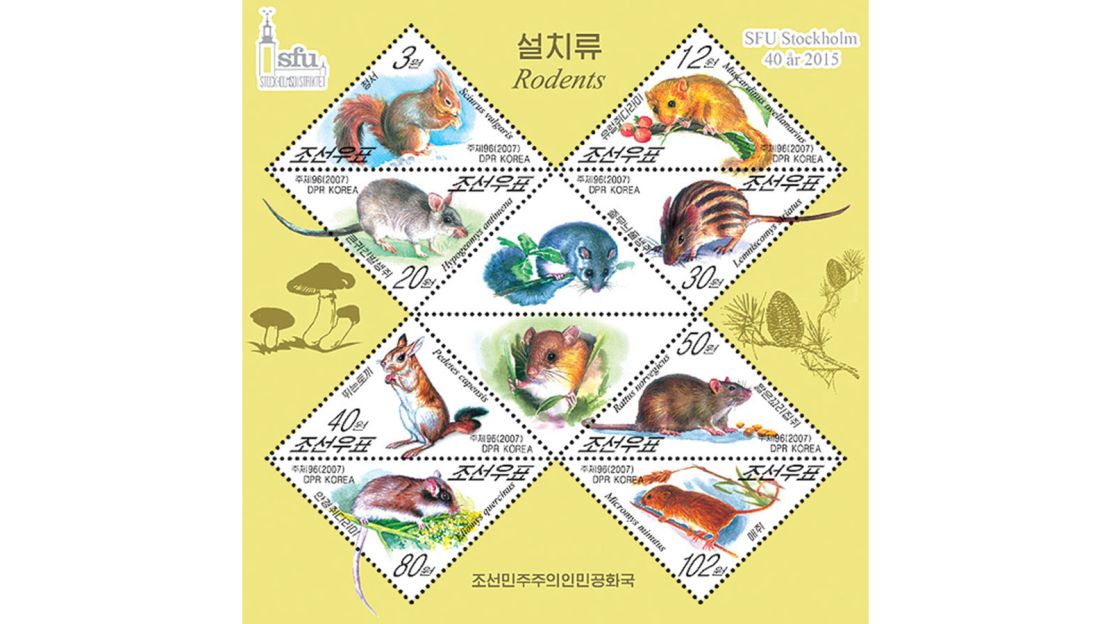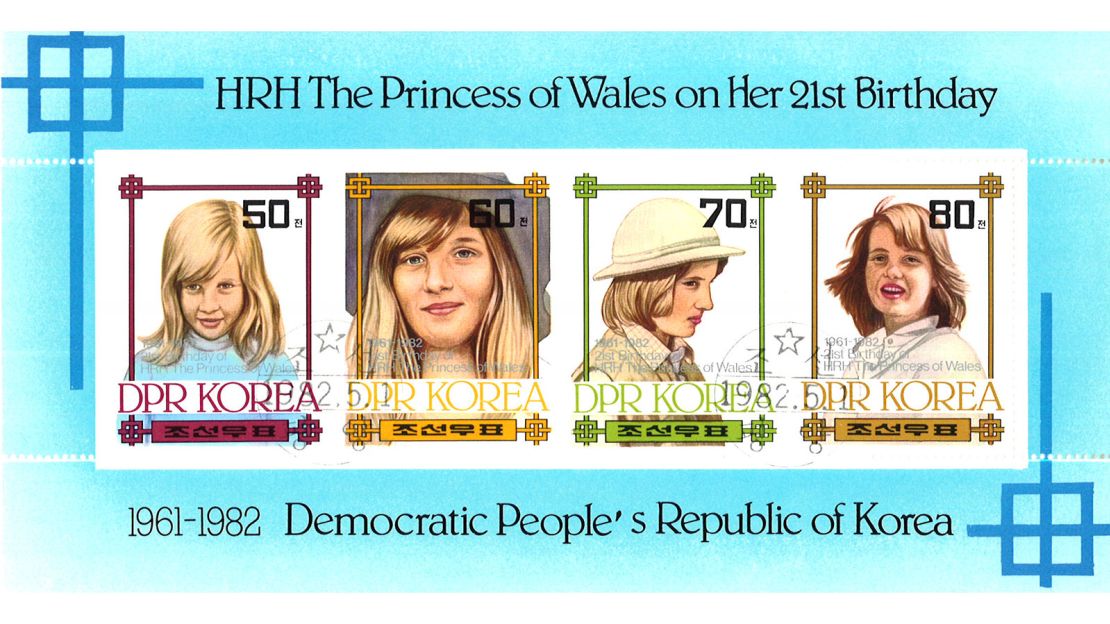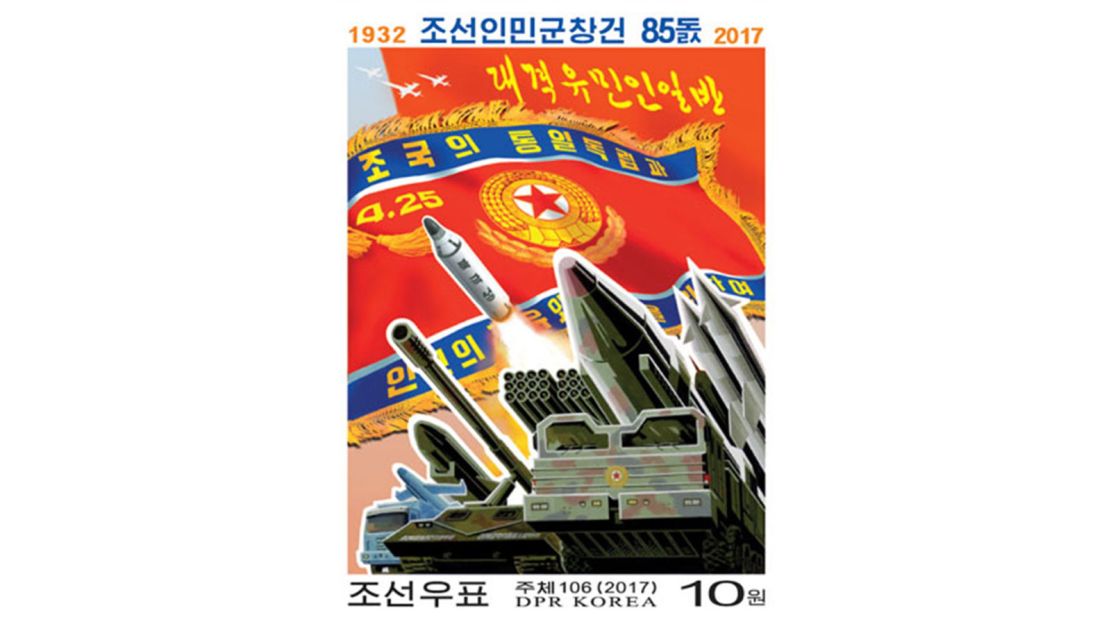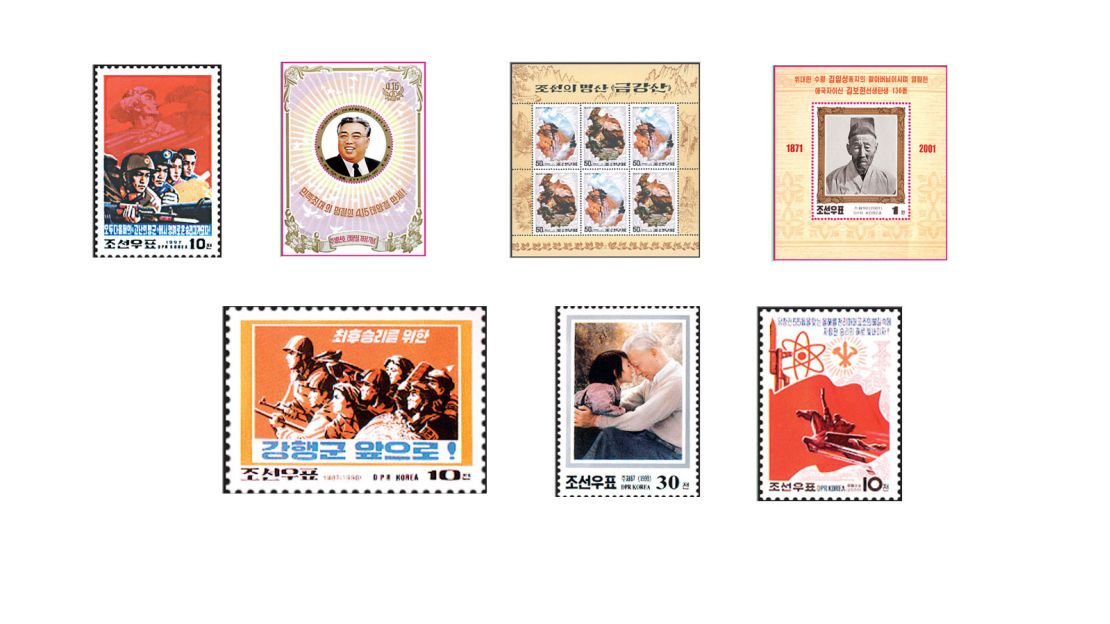North Korea has marked the anniversary of the Korean War – and its annual “Struggle Against US Imperialism Month” – by releasing two anti-American postage stamps.
Featuring warheads pointed at Capitol Hill, and a fist crushing a US missile, the stamps continue Pyongyang’s long tradition of issuing enemy-baiting collectors’ items.
But anti-American imagery forms just a fraction of the pantheon of bold, bizarre and, in some cases, extraordinarily mundane designs issued by the reclusive state each year.
An online catalog maintained by the country’s stamp-issuing authority, the Korea Stamp Corporation, lists over 70 different design categories. Topics like “revolutionary history” and “Respected Comrade Kim Jong-un” appear alongside soft power celebrations of transport, infrastructure, and innovation.
But there are some unexpected categories too, including “mushrooms,” “crustaceans,” and “chess.” Keen philatelists have also drawn attention to North Korea’s apparent fondness for depicting cute kittens.

Targeting collectors
With its eyes firmly on the collectors’ market, Pyongyang has turned the stamp industry into a steady source of income, according to the head of Asia studies at the University of British Columbia, Ross King.
“In the broad scheme of things, collector-oriented stamps far outweigh those with a political message,” King said on the phone.

“They even had Princess Diana on the stamps back in the 80s when they thought that Brits were buying stamps.”
King believes the country is “right up there with the United States” as one of the most prolific stamp-issuing authorities in the world.
“The US is another example of a country that uses the postal service to make a ton of money from gullible collectors,” King said.
“North Korea and the United States are very similar in that respect.”

Much like Western countries’ postal services, the reclusive state also designs stamps to commemorate national achievements and world events. Typical subjects include the Ryugyong Hotel, a 105-story pyramid-shaped structure that dominates Pyongyang’s skyline, and the 2014 World Cup – a tournament that North Korea failed to qualify for.
But despite their low value, stamps are cheap to produce and thus very profitable, according to Dutch collector and stamp dealer, Willem van der Bijl.
“Most of them don’t have a high market value,” he said on the phone from his stamp shop in Utrecht. “New issues, in mint condition, sell for around 50 (US) cents a stamp – though that’s just an average.
“But they’re just printing paper – which is worth nothing – and receiving valuable dollars. It’s more or less free money. The ones featuring sports and animals are just made to please collectors and get foreign currency.”
Having regularly visited North Korea before being reportedly detained there for two weeks, Van der Bijl likes the “simplicity” of the designs. He claims to own “almost all” of the stamps ever issued by the country.
A changing market
The world’s stamp market is changing, and North Korean designs are evolving to reflect shifting demand. In the 1980s, images of Princess Diana and German tennis star Steffi Graf were used to attract Western collectors. Today, China is the main target, according to King.
“Nobody in Europe or North America collects stamps anymore,” he said. “Now, (North Korea’s) stamps are pushing Chinese themes because they know that Chinese collectors are buying them.

“There’s been a clear shift towards designs that will be attractive to collectors in China. A lot of the designs in recent years have been celebrating North Korea-China friendship or Chinese pop culture and cultural icons.”
King explained that the trend dates back to the 1990s, referencing a stamp issued to celebrate the handover of Hong Kong. More recent designs include the cockerel, marking the Year of The Rooster.
China is believed to be home to about 20 million stamp collectors, about one-third of the world’s total. But stamp dealer Van der Bijl is uncertain whether they’ll be wooed by Pyongyang’s strategy.
“I told the North Koreans not to use Chinese topics,” said Van der Bijl, who maintains contact with some of the insular country’s stamp dealers. “The collectors’ market wants stamps that are related to the country that they’re from.
“Through stamps we can see the history of a country. I don’t think it’s wise to start making topics about other countries.”
A sign of the times
Although anti-American art is of negligible value to North Korea’s business model, it can still shine a light on diplomatic relations, according to Koen de Ceuster, a Leiden University lecturer who recently created an online database of North Korean posters.
“The images you see (in the newly issued stamps) speak to the recent developments in rocket missile technology – the fact that North Koreans now claim that they have the White House in sight and that they can reach the American continent with their missile systems,” he said on the phone.
“Propaganda images also often present American presence in South Korea as a form of occupation, and demand the departure of US troops to achieve reunification.”
North Korea’s artwork has, historically, provided insight into tensions between Pyongyang and Washington. During the Vietnam war, stamps were issued in solidarity with anti-American communists, while a 1969 issue officially titled “International Conference of Journalists Against US Imperialism,” shows Richard Nixon being attacked by pens. Stamps depicting the USS Pueblo, an American spy ship captured by North Korea in 1968, is another common trope.
But while art may imitate life, it does little to help us foresee events, King said.
“You can use North Korea’s postal imagery as a kind of diagnostic for policy directions, or to confirm certain suspicions about the party line. But unfortunately you can’t use it to predict policy.”




















